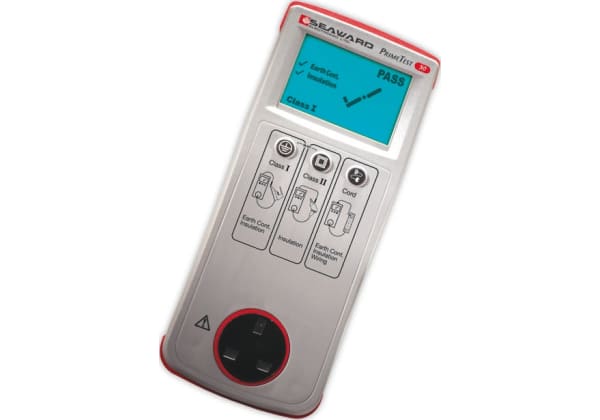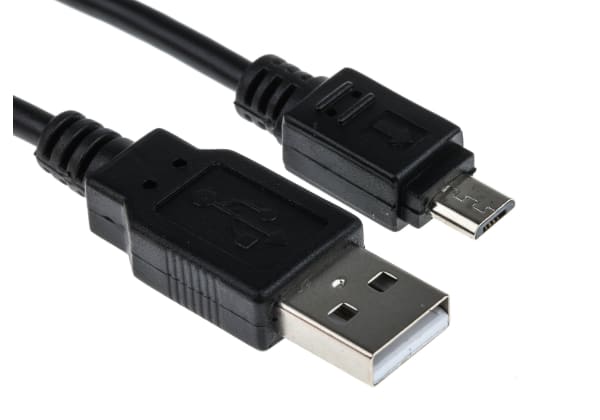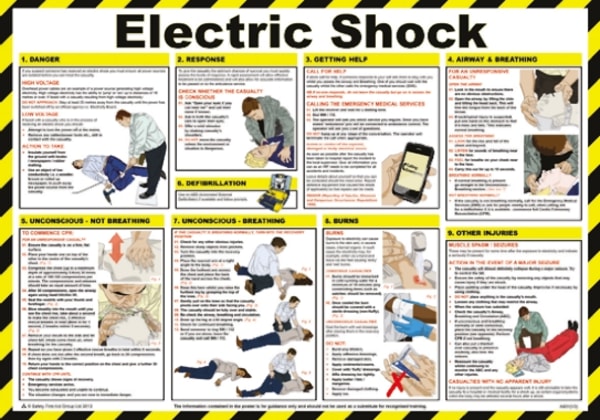- Published 21 Oct 2024
- Last Modified 21 Oct 2024
- 7 min
Guide to Cable Ratings
Cable ratings determine the temperature, current, and voltage in which a cable can safely operate. This guide explains the important role electrical cable ratings play in keeping electrical devices safe and efficient.

Electrical cables are everywhere. They carry energy, signals, and data, and come in a staggering array of types and sizes. Each one has ratings for temperature, current, and voltage. Understanding and selecting cable ratings is essential for keeping your electrical operations running smoothly, safely, and efficiently.
Cable Ratings
No, not television viewer metrics! Electrical cable ratings are the operating conditions cables must stay within to operate safely and efficiently throughout their lifetime. The chief cable ratings are temperature, voltage, and current, though they also consider resistance, shielding, and attenuation, which are crucial for maintaining signal integrity over distances.
Why are Cable Ratings Important?
Cable ratings determine what kind of functions cables can be used for. They’re essential for the following:
- Safety: Mis-selected cables can produce shocks, fires, and the hazards of electrical equipment failing to operate.
- Performance: Selecting the wrong cables can produce an excessive voltage drop, meaning wasted electrical energy and insufficient energy available to run machines.
- Cost: Over-engineering wires can mean using excessively large ones, driving up material costs and even equipment weight.
Choosing the right cable ratings will help keep your application incident-free, avoid cost overruns, and ensure compliance with UK electrical regulations, especially BS 7671.
Cable Temperature Ratings
Cable temperature ratings give you an idea of the conditions your cables can operate in. Thankfully, they’re less regionally variable than voltage or current since ambient air or soil don’t care what country they are in.
For power cables, exceeding the rated temperature can damage insulation and conductors, while for signal cables, high temperatures may cause interference or degradation in data transmission.
Cable insulation ratings define the type and performance of the material that encases the cable’s conductors. These ratings directly determine temperature ratings since they drive the heat load the cable can safely dissipate. Insulation materials get more flexible as they warm up, and this rigidity factors into cable suitability for applications.
There are a few distinct temperature rating types:
- Maximum Operating Temperature: This is the highest temperature a cable can withstand over its service life without physically breaking down or losing performance.
- Minimum Cold Bend Temperature: This measure of cable brittleness is the temperature below which it will not break or crack when manually bent.
- Minimum Installation Temperature: This is a recommended true minimum operating temperature with a comfortable margin above the cold bend one.
- Minimum Continuous Flexing Temperature: For applications that continually stretch and flex cables, you’ll want the lowest temperature at which they can withstand those dynamics without cracking.
Cable specs may only give the maximum operating and minimum installation ratings, so carefully consider your conditions to avoid overheating hazards or cable damage.
Cable Current Ratings
Cable size and current rating, or ‘ampacity,’ can be the most important parameters when selecting cables. Ampacity is the maximum current (in amps, A) that can flow through a cable without making it exceed its maximum operating temperature.
Cable conductor size and current ratings are directly linked, and the surrounding temperature and cable insulation ratings drive the published current rating too. Other factors can warrant further assessing the cable rating, though, like adjacently installed cables or the amperage of circuit devices.
Getting ampacity right is vital for avoiding fires, electrocution, and reduced performance, all of which can happen if cables receive more amps than they can handle. The system’s true ampacity involves complicated cable size and current rating formulas, so consider using a cable size and current rating calculator to optimise your electrical system’s safety and performance.
Cable Voltage Ratings
Voltage can be broadly compared to pressure when thinking about the flow of electricity in comparison to flowing fluids. Voltage represents the potential of electricity to discharge through a circuit.
Cable voltage ratings define the maximum voltage a cable can safely withstand, and consider three separate voltage measurements:
- Uo: the root mean squared (RMS) voltage between the cable’s conductors (individual wires) and the cable’s surroundings
- U: the RMS between individual conductors in a multicore cable, or between individually insulated single-core wires within a larger cable
- Um: the absolute maximum system voltage the cable can take
Voltage ratings display these three as ‘Uo/U (Um),’ though Um isn’t always used. A given RS hook-up wire could be rated to 300/500V, for example.
Voltage ratings apply to both power and signal cables, but in different ways.
Power Cables:
- Low Voltage (LV) Cables: Up to 1 kV, common in domestic and light commercial applications.
- Medium Voltage (MV) Cables: Between 1 kV and 33 kV, typically used in industrial power distribution.
- High Voltage (HV) Cables: Above 33 kV, used in power transmission systems.
Signal cables operate at much lower voltages (e.g., 12V, 24V), particularly in data and telecommunications applications. These ratings ensure signal integrity and prevent breakdown in the cable’s insulation under voltage stress.
Selecting cables with the right voltage rating is crucial for preventing overheating, insulation breakdown, and fires. Carefully consider the mains electricity voltage you’re working with. For example, the cable ratings UK applications need to have for low voltage don’t exceed 1 kV, but high voltage cable ratings go up to 230 kV.
Cable Ratings Chart
Cable size and current rating specifications vary by brand, region, and cable type. If possible, seek out a cable size and current rating chart for the type of cable you plan to run so you can compare how different cable sizes in the series will perform.
For example, the specification for the below RS hook-up wire, which is rated to 600/1000V and −15 to +105°C, includes the following cable ratings chart.
It lists a range of cable sizes, and includes their AWM sizing value, current rating, nominal diameter, maximum resistance, and weight per unit length:
AWM Size | Size | Max. diam of wires in conductor | Max. Resistance at 20°C | UL Style | Nominal R/T | Nominal Diameter | Current Rating | Weight |
|---|---|---|---|---|---|---|---|---|
| mm² | mm | Ω/km | mm | mm | A | kg/km | ||
| 22 | 0.5 | 0.21 | 39.0 | 1015 | 0.8 | 2.6 | 11 | 11 |
| 20 | 0.75 | 0.21 | 26.0 | 1015 | 0.8 | 2.8 | 14 | 14 |
| 18 | 1 | 0.21 | 19.5 | 1015 | 0.8 | 3 | 17 | 17 |
| 16 | 1.5 | 0.26 | 13.3 | 1015 | 0.8 | 3.3 | 21 | 22 |
| 14 | 2.5 | 0.26 | 7.98 | 1015 | 0.8 | 3.7 | 30 | 33 |
| 12 | 4 | 0.31 | 4.95 | 1015 | 0.8 | 4.3 | 41 | 49 |
| 10 | 6 | 0.295 | 3.30 | 1015 | 0.8 | 4.9 | 53 | 71 |
| 8 | 10 | 0.41 | 1.91 | 1028 | 1.2 | 6.8 | 75 | 124 |
| 6 | 16 | 0.41 | 1.21 | 1283 | 1.58 | 9.2 | 100 | 199 |
| 4 | 25 | 0.41 | 0.78 | 1283 | 1.58 | 10.6 | 136 | 290 |
| 2 | 35 | 0.41 | 0.554 | 1283 | 1.58 | 11.6 | 167 | 387 |
| 1 | 50 | 0.41 | 0.386 | 1283 | 2.1 | 14.4 | 190 | 570 |
| 2/0 | 70 | 0.51 | 0.272 | 1284 | 2.1 | 16.5 | 240 | 781 |
| 3/0 | 95 | 0.51 | 0.206 | 1284 | 2.1 | 18.7 | 300 | 1025 |
| 4/0 | 120 | 0.51 | 0.121 | 1284 | 2.1 | 20 | 340 | 1280 |
Cable ratings charts are useful for comparing cable conductor size and current ratings so you can select the safest, most efficient cable to meet your needs.
De-Rating Cables
Temperature, insulation, cable size and current rating may not be enough information to represent a cable’s true ampacity. If other operating conditions hinder a cable’s ability to dissipate heat, then the ampacity needs to be reduced: this ‘de-rating’ means reducing the value in amps that you consider the cable able to withstand.
Various things in a cable’s installation setup can call for de-rating:
- Adjacent Cables: If the cable has more than two other similar cables routed alongside it, these will all dissipate heat into each other and reduce their ampacity.
- Adjacent Surfaces: Solid surfaces cables run against will absorb their heat less than the surrounding air.
- Heat Sources: The Sun or other hot machinery can add heat to cables trying to expel it.
- Burying: Cables buried underground dissipate far less heat than those in open air. The cable’s depth and the soil’s temperature and thermal resistivity further affect this dissipation.
- Signal Cables: De-rating can relate to environmental interference, e.g., electromagnetic interference (EMI) in close proximity to power cables. This can disrupt the transmission of data.
Types of Industrial Cable
RS carries industrial cables for a wide range of temperature, voltage, and current conditions:
RS carries industrial cables for a wide range of temperature, voltage, and current conditions:
- Control Cable: for machine control and automation
- Power Cable: for supplying an electrical device with electrical energy from a source
- Power Cords: standalone, highly protected power cables with pre-installed connections on both ends
- EV Charging Cable: specialty cables for charging electric vehicles
- Sensor Cable: for machine operating data
- Data Cable: for transmitting high volumes of information without losses
For each case, study the cable ratings to ensure they’re suited for your application.
Specifying Cables Checklist
Whenever you’re planning a wiring route, consider the following:
- What is the system voltage?
- What electrical loads are in the system, and what voltage will they draw?
- What ambient temperature do you expect?
- How will the wire be mounted? Is it exposed to the air (or Sun), against a solid object, embedded in a wall, buried underground, etc.?
- How many adjacent wires are there?
- How many conductors can the wire have?
- What will the wire’s end connections be? If they have different ratings, they may be the true constraint and will warrant de-rating.
Use your answers to select the wire’s voltage rating, thickness, insulation, and current rating to ensure the cable stays within its temperature ratings and doesn’t break down.
Finally, ensure your wiring complies with these UK standards:
- BS 7671: IET Wiring Regulations covering electrical installations
- BS EN 60228: Specifies the requirements for conductors in insulated cables
- BS EN 50525: Standards for low voltage power cables
- BS 5308: Specifies requirements for instrumentation cables, used in industrial control and data transmission
- IEC 60332: Fire resistance testing of cables
- BS 6724: Armoured cables with LSZH sheathing for industrial use
- BS EN 50173: Relevant for structured cabling in data and communication networks (includes signal cables such as Cat5 and Cat6)
RS offers cables and wires covering many ranges of ratings, as well as cable management systems.


